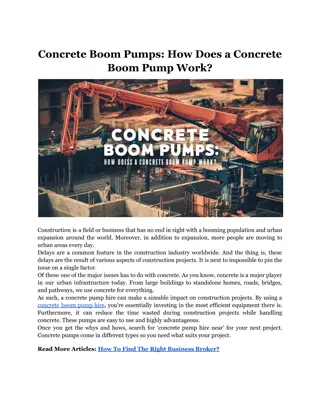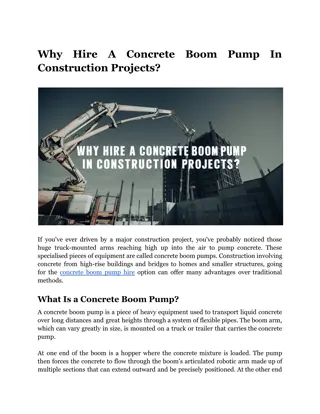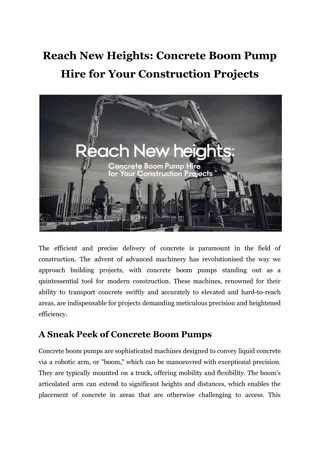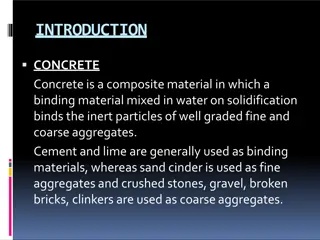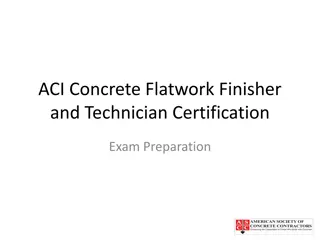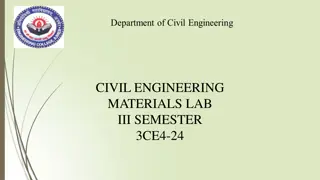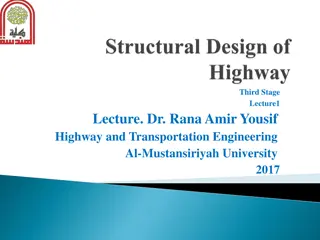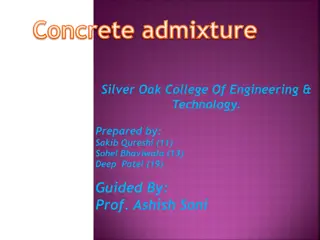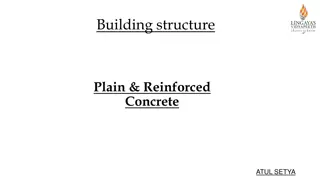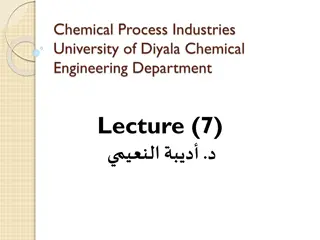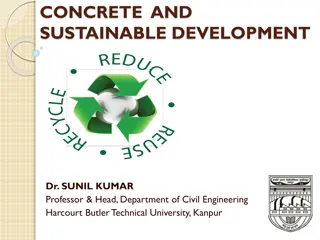Safety Measures for Using Concrete in Construction Projects
Concrete is a commonly used material in construction projects, but it comes with risks to health. Wet cement can cause serious burns or ulcers on skin, as well as chemical burns to the eyes. Proper precautions such as wearing appropriate PPE, controlling exposure, and safe handling techniques can help mitigate these risks. This includes using waterproof gloves, suitable footwear, full-cover clothing, and eye protection. Additionally, measures should be taken when dealing with concrete trucks and pumps to ensure safety on site.
Download Presentation

Please find below an Image/Link to download the presentation.
The content on the website is provided AS IS for your information and personal use only. It may not be sold, licensed, or shared on other websites without obtaining consent from the author.If you encounter any issues during the download, it is possible that the publisher has removed the file from their server.
You are allowed to download the files provided on this website for personal or commercial use, subject to the condition that they are used lawfully. All files are the property of their respective owners.
The content on the website is provided AS IS for your information and personal use only. It may not be sold, licensed, or shared on other websites without obtaining consent from the author.
E N D
Presentation Transcript
SAFE USE OF CONCRETE Ashview CPD March 2018
SAFE USE OF CONCRETE As we are all aware concrete is one of the most commonly used materials within the construction industry. It is used on almost all construction projects. With this comes obvious risks whilst using concrete. Concrete is made from a mix of Cement, Aggregates (sand and stones) and water. It is the cement within this mix that can cause a hazard to health. Wet cement is highly alkaline in nature. A serious burn or ulcer can rapidly develop if it is trapped against the skin. In extreme cases, these burns may need a skin graft or cause a limb to be amputated. Cement can also cause chemical burns to the eyes.
CEMENT CAN CAUSE ILL HEALTH IN THE FORM OF: Contact with skin - This can cause Dermatitis (Irritant dermatitis and Allergic dermatitis) Dust inhalation when cutting or scabbling concrete which can produce high levels of dust which may contain silica. Manual handling. Concrete is a heavy material, a wheel barrow can weigh upwards of 100kg so correct manual handling techniques to be used
WHEN USING CONCRETE, MEASURES SHOULD BE TAKEN TO TRY AND CONTROL AGAINST THE RISKS INVOLVED. Where possible prevent or reduce the exposure to wet concrete by using pre cast concrete products or increase the distance between the operative and the concrete by using longer handled tools. Control the risk by wearing the correct PPE. Gloves - Gloves used whilst using concrete should be waterproof and suitable for using with high alkaline substances such as concrete. The glove should be long and tight fitted to prevent concrete being trapped between the glove and skin which will cause a burn. Footwear - If standing in the concrete suitable footwear such as wellington boots should be worn. The boot should be high enough to prevent the concrete entering the top of the boot. Clothing - Full cover clothing should be worn to prevent the concrete coming in contact with the skin. Waterproof trousers should be worn, if kneeling on concrete such as a screed knee pads should be worn and the time spent kneeling on the concrete surface should be minimized. (I can vouch for this one from experience) Eye Protection - Certain jobs will require goggles others will require full face shields and some will just need regular safety glasses.
CONCRETE TRUCK Unless mixed onsite concrete will be delivered to site in a ready mixed concrete truck. A suitable and safe access should be provided for the truck. Where the truck cannot discharge directly into the works then transport to move the concrete from the delivery truck to the works must be provided usually by either concrete pump or concrete skip. Aggregate or concrete particles must be cleaned off the vehicle/chute before it returns to its plant because if they are deposited on the public highway they would be a potential hazard to pedestrians and other road users.
Concrete Pump - The concrete pump must be set up in accordance with manufacturers instructions. The pump and boom will be operated by a trained operative. A clear line of communication must be kept between the the operator and the concreters at all times. Concrete Skip - All skips and lifting equipment should have the relevant certifications (GA1) and in date before being used on site. Banksman to determine the location for Skip to filled. The banksman will accompany the skip at all times. When the skip is in position to be discharged the banksman can operate the chute lever. The lever is opened and the concrete poured in to the required place. Operatives are to ensure that hands are clear of any trapping points before opening or closing the skip. The concrete skip and concrete must both be washed out in the designated area.





